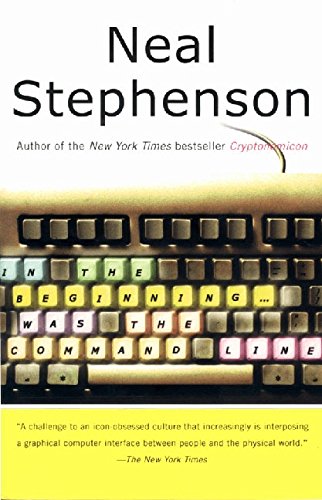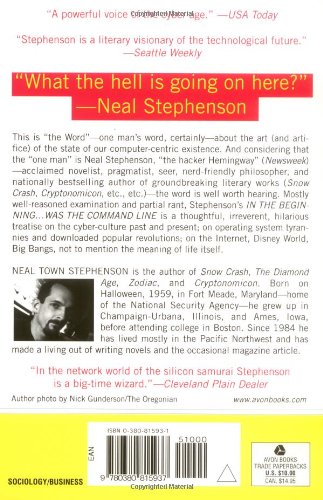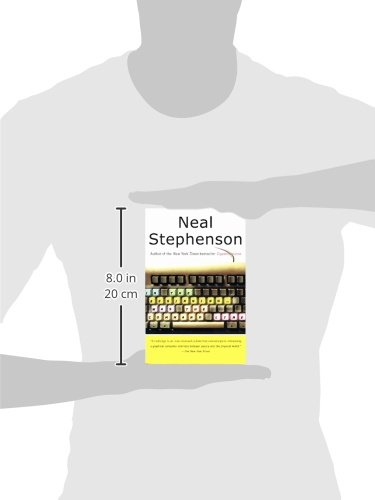Customer Services
Copyright © 2025 Desertcart Holdings Limited
Desert Online General Trading LLC
Dubai, United Arab Emirates




You may well ask what light cyberpunk maestro Neal Stephenson can shed on the subject of operating systems and interface design. He's better known for his novels: Snow Crash, a dystopian not-too-distant future of avatars, linguistic software viruses and rent-a-nukes; The Diamond Age in which Victorian values come a cropper of nanotechnology; and Cryptonomicon, his 900 page opus spanning the development of hacking from before Bletchley Park to a contemporary data haven in Southeast Asia, complete with an (imaginary, obviously) gay love scene in the woods outside New Haven involving cryptography pioneer Alan Turing.No one could read a Stephenson novel and not recognise his frighteningly powerful grasp of social and political history, and of technology that underpins all his stories. Read the liner notes on Snow Crash and you'll realise this is a man who probably considers Apple's Human Interface Guidelines to be soothing bedtime reading.In the Beginning...Was the Command Line gives Stephenson an opportunity to flex his own non-fictional muscles. Part memoir, part developer's history of operating systems, it trawls through CLIs (command line interfaces) such as MS-DOS to GUIs (graphical user interfaces), the then-as now--revolutionary Macintosh OS, and everything since: Windows 98 (note: purist Stephenson doesn't even consider this an OS), Unix and Linux.By the end of his enlightening, exhaustive elucidation of these and other TLAs, you too may suffer the subject of one of the book's final chapters: "geek fatigue". Not to worry--if there's one thing of which you can be certain it's that Stephenson never takes himself, or his subject, too seriously, and anything that cites Dilbert cartoons and H. G. Wells as source material has got to be a giant step forward. --Liz Bailey
Trustpilot
1 month ago
3 weeks ago